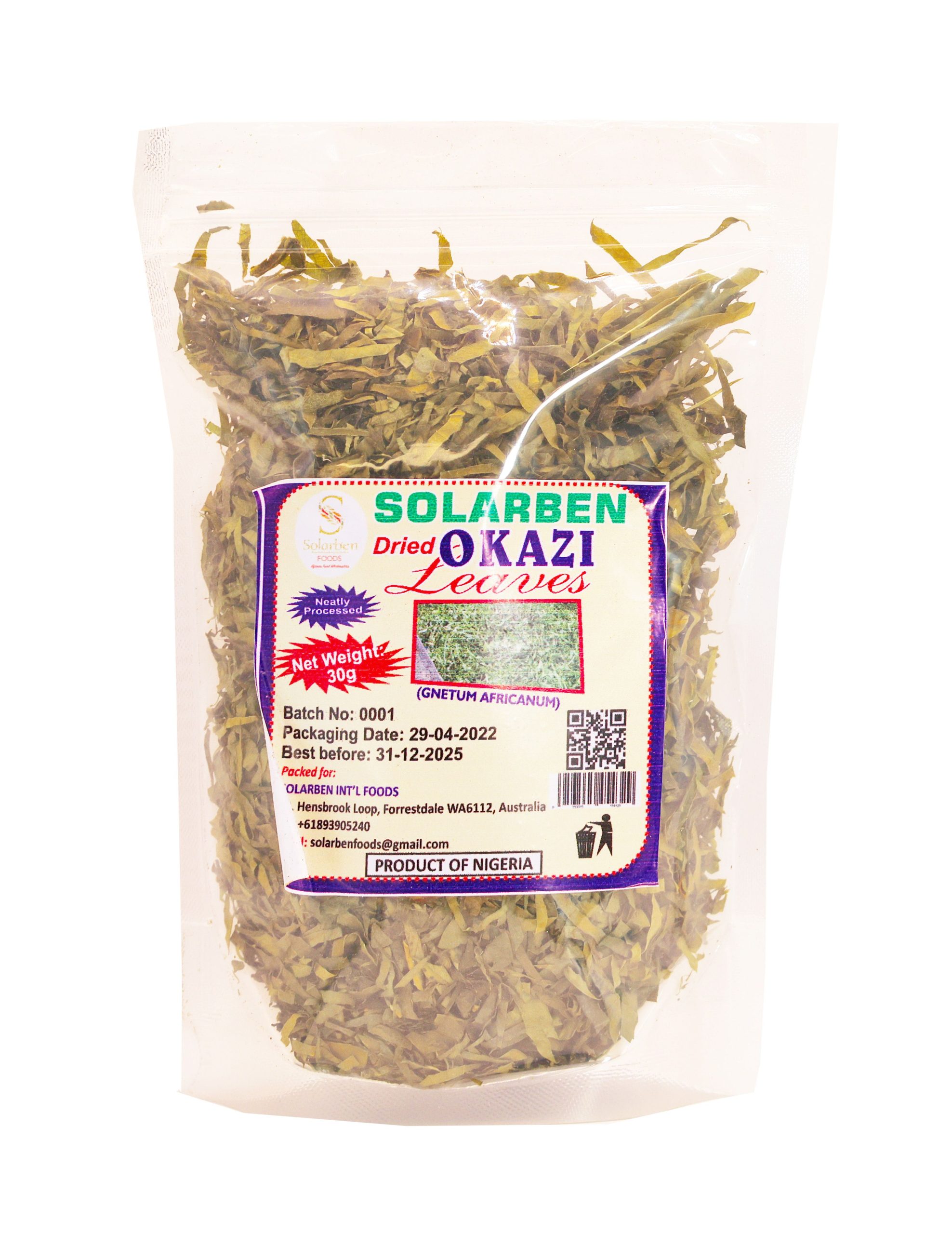PRODUCT BREAKDOWN
Okazi leaves also known as Gnetum africanum and Gnetum bucholzianum are of great importance to many afro-carribean communities and are given different vernacular and commercial names. For example, in the Central African Republic, Gabon, Congo, the Democratic Republic of Congo and Angola, both species are locally called KoKo. In the English-speaking part of Cameroon, the local name is eru while in the French-speaking part the name is okok. Finally, in Nigeria, the Igbo tribe gives them the name Okazi, and the Efiki/Ibibio tribe gives them the name afang
INGREDIENTS
Whole okazi
HOW TO USE
Considered as a vegetable with leaves rich in protein, okok is present in many Cameroonian markets, and prepared in different ways. In fact, it will be salty or sweet depending on the preparation. In Nigeria, the leaves of Gnetum africanum are used as a treatment against dilated spleens, sore throats or as a cathartic. In Ubangui (Democratic Republic of Congo), it is used as a remedy against nausea and is considered an antidote against certain types of poison. In Congo-Brazzaville, the leaves of the two species of Gnetum are used as a bandage against warts and boils and the cuttings are the basis of herbal teas to relieve the pain associated with childbirth. In Mozambique, Gnetum africanum is used as a medicinal plant.
However, it is mainly for its nutritional value that Gnetum is particularly prized. The leaves can be eaten raw or finely chopped and added to soups and stews.
STORAGE
Keep cool, dry. Seal tightly after opening.

